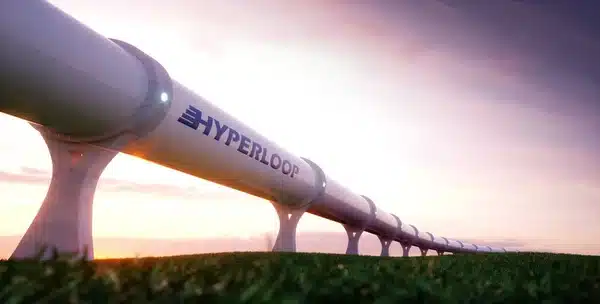Hyperloop is a high-speed transportation system that uses magnetically levitating pods to travel through a low-pressure tube. It was first proposed by entrepreneur Elon Musk in 2013 and has since gained a lot of attention from investors, researchers, and transportation enthusiasts around the world.
Hyperloop
The potential benefits of hyperloop include reduced travel times, increased energy efficiency, and reduced environmental impact. However, there are also several challenges that must be overcome before hyperloop becomes a viable transportation option.
Here are some possible future developments in hyperloop technology and their potential implications:
- Longer and faster routes: Currently, the longest hyperloop route in operation is a 500-meter test track. However, there are plans to build longer routes, such as the proposed 600-kilometer route from Mumbai to Pune in India. As the technology improves, hyperloop pods could travel even faster, potentially reaching speeds of over 1,000 km/h. Longer and faster routes could revolutionize transportation by enabling people to travel greater distances in a shorter amount of time.
- Increased safety: Safety is a major concern for hyperloop, as passengers will be traveling at extremely high speeds in a low-pressure environment. To address these concerns, hyperloop developers are exploring ways to ensure the safety of passengers, such as using multiple redundant systems and implementing emergency evacuation procedures. As safety concerns are addressed, more people may be willing to use hyperloop as a viable transportation option.
- Lower costs: One of the biggest challenges facing hyperloop is its cost. Building the infrastructure for a hyperloop system is expensive, and the technology is still relatively unproven. However, as more companies and investors get involved in hyperloop development, costs may start to come down. In addition, the increased efficiency of hyperloop could make it a more cost-effective option than traditional transportation methods.
- Integration with other modes of transportation: Hyperloop could potentially be integrated with other modes of transportation, such as buses, trains, and airplanes, to create a seamless travel experience. For example, passengers could take a hyperloop to a regional airport, where they could board a plane for a longer journey. This could make travel faster and more convenient for passengers.
- Increased capacity: Hyperloop pods are relatively small and can only carry a limited number of passengers. However, developers are exploring ways to increase the capacity of hyperloop systems. One possibility is to use larger pods that can carry more passengers. Another is to increase the frequency of pods traveling through the system. If capacity can be increased, the hyperloop could become a more viable option for mass transit.
- Sustainable energy sources: Hyperloop has the potential to be a very energy-efficient mode of transportation. However, it still requires a significant amount of energy to operate. To address this issue, some developers are exploring the use of sustainable energy sources to power hyperloop systems, such as solar or wind power. This could make hyperloop a more environmentally friendly transportation option.
- International routes: Hyperloop has the potential to connect cities and countries that are separated by large distances. For example, a hyperloop system could connect Europe and Asia through a tunnel under the Bering Strait. As hyperloop technology becomes more advanced and widespread, it could enable people to travel between continents in a matter of hours, rather than days.
- Hyperloop freight: In addition to transporting passengers, the hyperloop could also be used to transport freight. This could be particularly useful for time-sensitive or high-value goods, such as medical supplies or electronics. Hyperloop freight could also help reduce the carbon footprint of shipping by providing a more energy-efficient mode of transportation.
Overall, the future of the hyperloop is full of exciting possibilities. As technology continues to develop and mature, it has the potential to transform the way we travel and connect with one another. However, there are also many challenges that must be overcome before the hyperloop becomes a widespread and reliable transportation option. It will be interesting to see how the hyperloop evolves over the coming years and decades.






